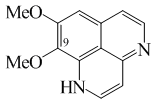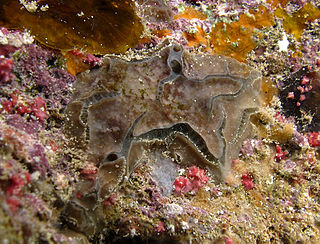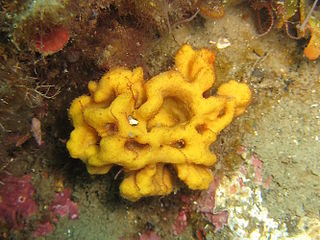
Aaptos aaptos is a species of sea sponge belonging to the family Suberitidae.

Chondrilla nucula, sometimes called the Caribbean Chicken-liver sponge, is a species of sea sponge belonging to the family Chondrillidae.

Placospongia is a genus of sea sponges belonging to the family Placospongiidae.
Ancorina is a genus of sea sponges belonging to the family Ancorinidae. It is the type genus of its family.

Geodia is a genus of sea sponge belonging to the family Geodiidae. It is the type genus of its taxonomic family.

Polymastia is a genus of sea sponges containing about 30 species. These are small to large encrusting or dome-shaped sponges with a smooth surface having many teat-shaped projections (papillae). In areas of strong wave action, this genus does not grow the teat structures, but instead grows in a corrugated form.

Axinella is a genus of sponges in the family Axinellidae first described in 1862 by Eduard Oscar Schmidt. Species of Axinella occur in the Indian and Pacific Oceans. Most of these sponges are smaller than 20 cm, and have a yellow or orange colour.

The hawksbill sea turtle is a critically endangered sea turtle belonging to the family Cheloniidae. It is the only extant species in the genus Eretmochelys. The species has a worldwide distribution, with Atlantic and Indo-Pacific subspecies—E. i. imbricata and E. i. bissa, respectively.
Hymeniacidon is a genus of sea sponges in the class Demospongiae. Some members of the genus are known to be mobile, achieving speeds of between 1 and 4 mm per day.

Clathria is a large genus of demosponges in the family Microcionidae.
Isodictya is a genus of marine demosponge in the family Isodictyidae.
Biemna is a genus of sea sponges in the family Biemnidae.

Haliclona is a genus of demosponges in the family Chalinidae.
Dictyodendrillidae is a family of sponges in the order Dendroceratida.

Myxilla is a genus of demosponge belonging to the family Myxillidae. These sponges usually form encrustations on rock surfaces.

Crella is a genus of marine demosponges in the family Crellidae.

Clathria (Clathria) is a subgenus of demosponge in the family Microcionidae.

Tedania is a genus of sea sponges in the family Tedaniidae.

Mycale is a genus of demosponge with 240 recognised species in 11 subgenera. It has been a large genus with multiple subdivisions since it was first described in 1867.
Ciocalypta is a genus of sea sponges belonging to the family Halichondriidae.












